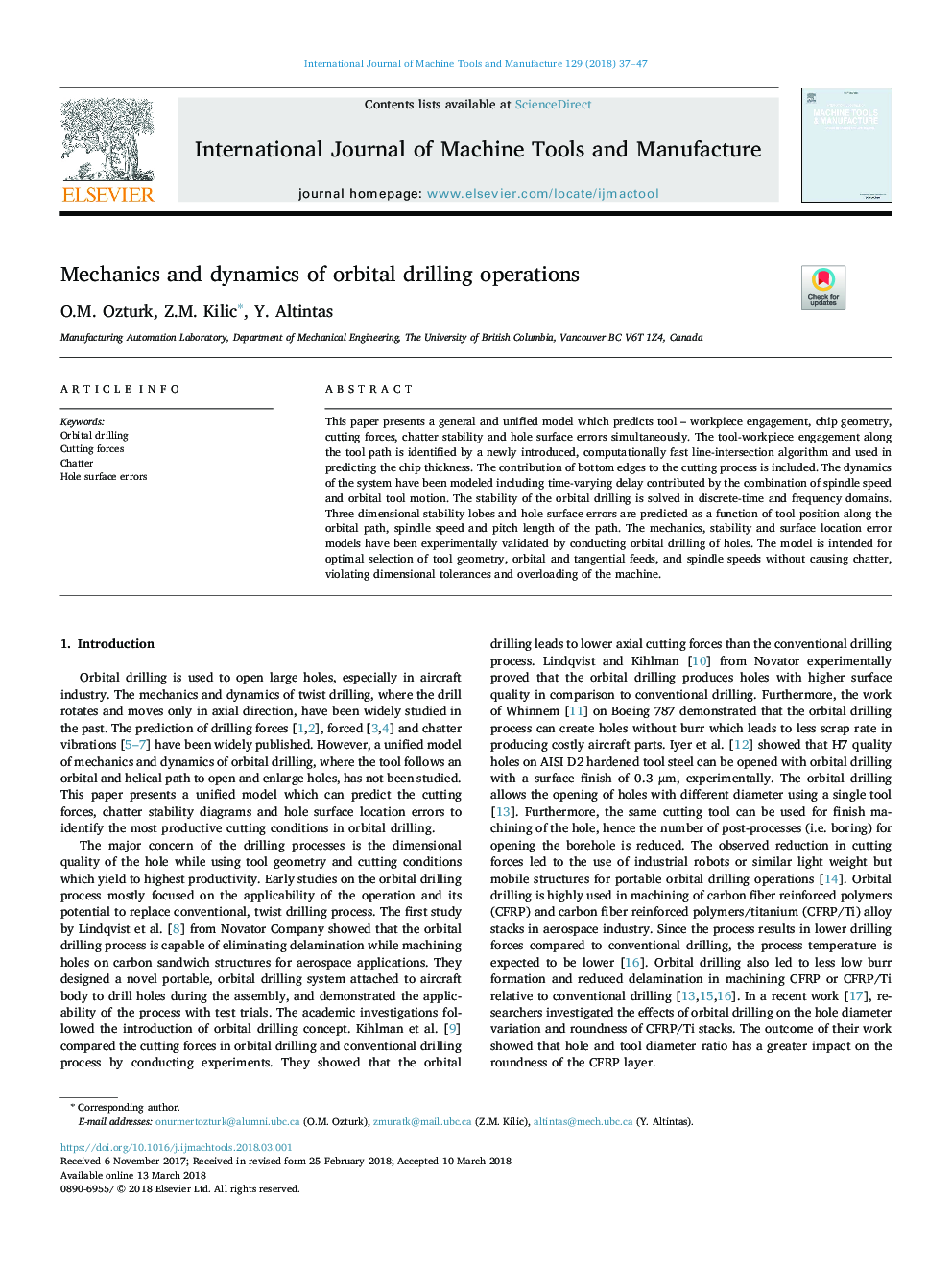| Article ID | Journal | Published Year | Pages | File Type |
|---|---|---|---|---|
| 7173351 | International Journal of Machine Tools and Manufacture | 2018 | 11 Pages |
Abstract
This paper presents a general and unified model which predicts tool - workpiece engagement, chip geometry, cutting forces, chatter stability and hole surface errors simultaneously. The tool-workpiece engagement along the tool path is identified by a newly introduced, computationally fast line-intersection algorithm and used in predicting the chip thickness. The contribution of bottom edges to the cutting process is included. The dynamics of the system have been modeled including time-varying delay contributed by the combination of spindle speed and orbital tool motion. The stability of the orbital drilling is solved in discrete-time and frequency domains. Three dimensional stability lobes and hole surface errors are predicted as a function of tool position along the orbital path, spindle speed and pitch length of the path. The mechanics, stability and surface location error models have been experimentally validated by conducting orbital drilling of holes. The model is intended for optimal selection of tool geometry, orbital and tangential feeds, and spindle speeds without causing chatter, violating dimensional tolerances and overloading of the machine.
Related Topics
Physical Sciences and Engineering
Engineering
Industrial and Manufacturing Engineering
Authors
O.M. Ozturk, Z.M. Kilic, Y. Altintas,
